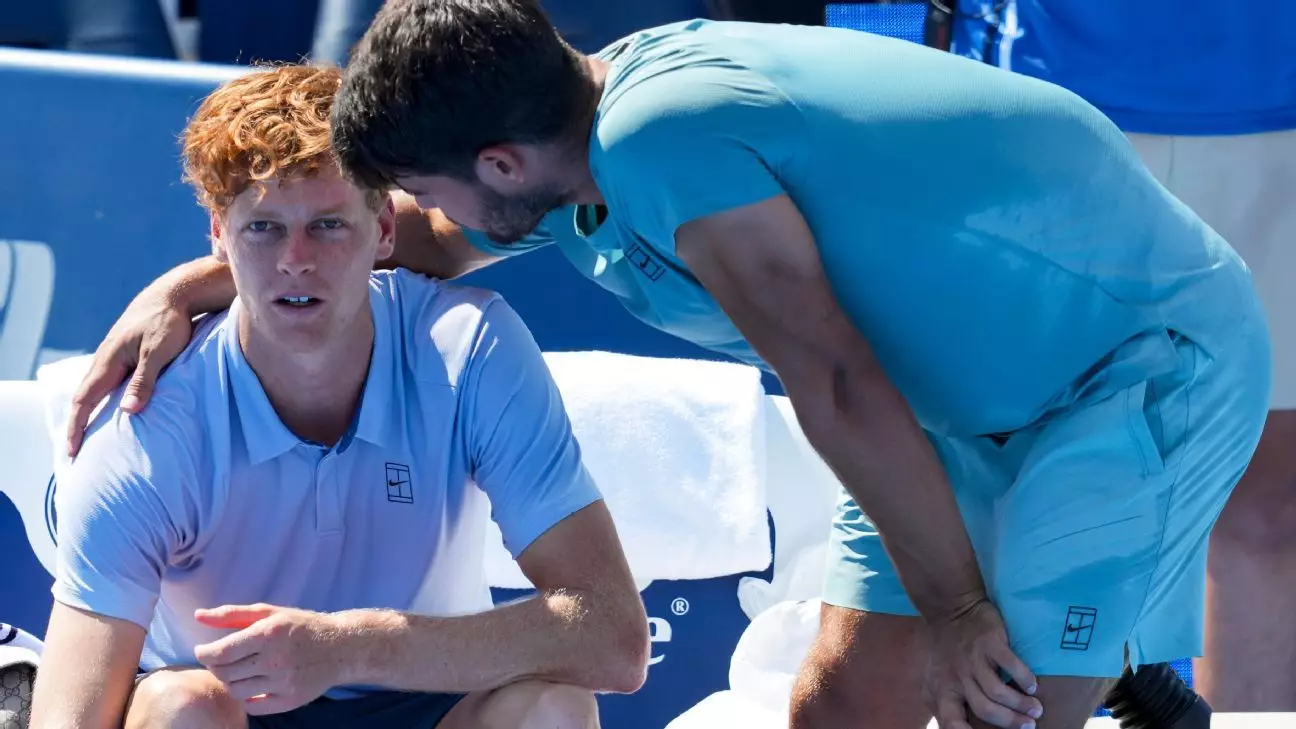In the world of professional tennis, few moments are as unpredictable and humbling as a sudden retirement due to illness. The Cincinnati Open final exemplified this unpredictability when Jannik Sinner, battling a mysterious ailment, was forced to withdraw mere minutes into the match against a passionately determined Carlos Alcaraz. Despite the disappointment, this incident underscores the brutal reality of sports—the fragile boundary between peak physical condition and unforeseen injury or illness. Sinner’s early departure not only robbed spectators of a potentially epic contest but also shed light on the mental and physical vulnerabilities that even top-tier athletes face. It echoes a recurring theme: no matter how talented or prepared, athletes remain susceptible to forces beyond their control, reminding us of the precarious nature of sports at the highest level.
The Significance of the Retirement in Context
This event was more than just an unfortunate medical withdrawal; it marked only the third instance in Cincinnati’s storied history where a men’s final concluded in retirement. Such circumstances are rare, often highlighting the unpredictability that can punctuate a high-stakes match. The last notable instance was over a decade ago when Novak Djokovic withdrew due to injury, a reminder of how rare but impactful such moments are in shaping tournament narratives. The fact that Sinner, who was riding a 12-match winning streak and boasting a 26-match hard court winning streak, had to retire underlines how relentless physical factors can derail even the most promising campaigns. It also could be interpreted as a symbolic early warning signal—a reminder that as much as the game is about skill and mental resilience, it is equally about managing health and physical wear.
Carlos Alcaraz’s Ascendancy and Future Potential
While the event was shrouded in unforeseen circumstances, it ultimately became a showcase for Carlos Alcaraz’s burgeoning dominance. His joy in lifting the trophy, especially after falling short in similar finals earlier this year, reflects not just a moment of victory but a sign of his fierce competitive spirit. Alcaraz’s rise to No. 2 in the rankings and his victory in Cincinnati are emblematic of a new era in men’s tennis—one characterized by relentless energy, adaptability, and clout in decisive moments. His defeat of Sinner, despite the latter’s recent storming streak, affirms Alcaraz’s resilience and readiness to seize opportunities. This triumph will undoubtedly fuel his confidence, positioning him firmly among the favorites for upcoming Grand Slam challenges, especially with the U.S. Open on the horizon.
The Rivalry and the Road Ahead
Alcaraz and Sinner have cultivated a compelling rivalry that promises exciting battles ahead. Their contrasting styles and shared history—marked by intense encounters on clay, grass, and hard courts—add layers of anticipation for future matchups. Although their recent meeting was cut short, the historical context of their rivalry hints at potential clashes that could define tennis narratives in the coming seasons. Sinner’s current form suggests he remains a formidable threat, while Alcaraz’s rising trajectory indicates he is destined to challenge the sport’s elite consistently. This event reaffirmed that tennis’s future belongs to players like Alcaraz who combine skill, mental toughness, and a relentless desire to excel.
The Broader Implication for the Tennis World
As the Cincinnati Open concludes with this unexpected twist, the event serves not only as a warm-up for the U.S. Open but also as a reminder that competition is inherently unpredictable. For fans, it underscores the importance of appreciating the sport’s fragility and the perseverance required to thrive amid adversity. For players, it offers a cautionary tale of the importance of physical management and mental resilience. Most critically, it highlights the rise of new stars ready to challenge old hierarchies, indicating that the tennis landscape is evolving—dynamic, uncertain, and fiercely competitive.
The incident also prompts a reflection on the importance of health and well-being in professional sports. As players push their physical boundaries, tournament organizers, coaches, and athletes themselves must recognize that longevity and safety are paramount. The 2023 Cincinnati final thus becomes a case study in resilience—a reminder that greatness often emerges not just from victories, but from the perseverance to endure setbacks and unexpected health challenges.

